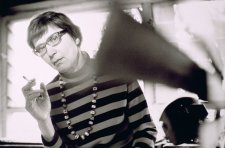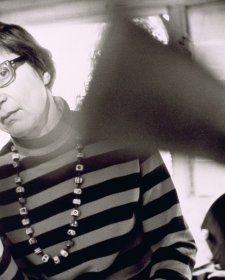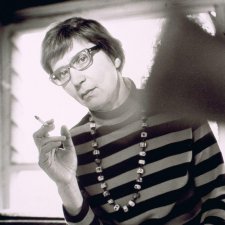Inge King AO (1915–2016), sculptor, was at the forefront of the development of non-figurative sculpture in Australia and remained one of Australia’s outstanding sculptors into her 80s – a time in her life in which she continued to develop innovative work. Born in Berlin, King studied sculpture in Germany before fleeing to England in late 1938. Having studied further in Glasgow, she met the Australian printmaker and painter Grahame King in London, and they settled permanently in Australia in 1951. King was one of the founding members of the influential 'Centre 5' group whose aim was to foreground contemporary sculpture in Australia. The group also advocated the advancement of abstraction in sculpture, which by the 1970s was characterised by the use of industrial techniques and materials such as sheet steel. Inge King held more than 26 solo exhibitions including a retrospective at the National Gallery of Victoria in 1992, and she participated in more than 60 group shows in London, New York, Australia and New Zealand. She completed many important public sculptures including the RAAF Memorial 1971, Canberra; Black Sun 1975, Australian National University; Forward Surge 1974, Victorian Arts Centre; Temple Gate 1976–1977, National Gallery of Australia; Sun Ribbon 1980, Melbourne University; and Sentinel 2000, Doncaster Gateway. King was awarded numerous prizes and honours, including the Order of Australia in 1984 for her services to art, an honorary Doctor of Letters from Deakin University in 1990, and an honorary Doctor of Arts from RMIT in 1993. She died at the age of 100, having seen a centenary celebration of her work at the National Gallery of Australia in 2015.







